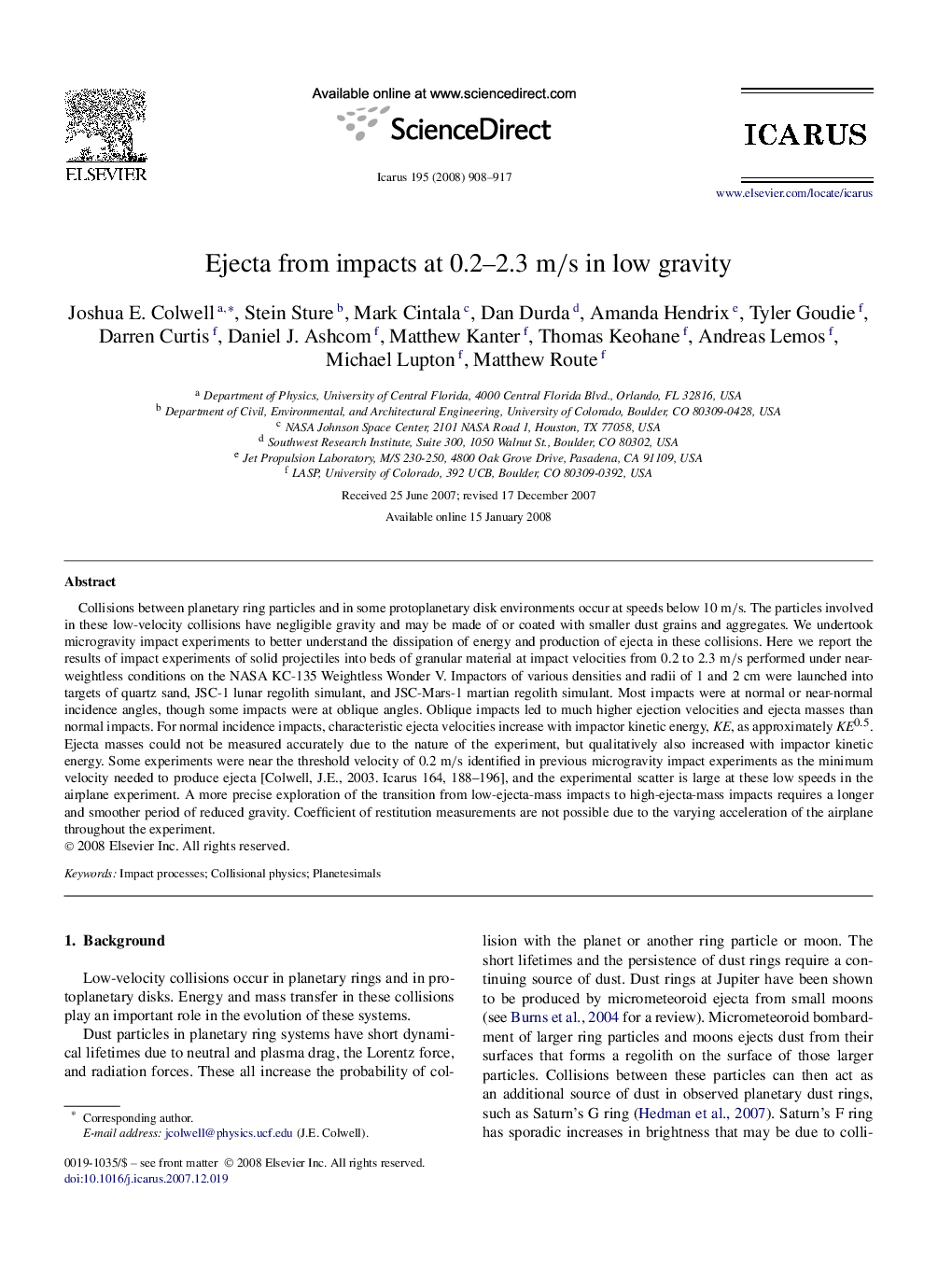| کد مقاله | کد نشریه | سال انتشار | مقاله انگلیسی | نسخه تمام متن |
|---|---|---|---|---|
| 1774983 | 1021180 | 2008 | 10 صفحه PDF | دانلود رایگان |

Collisions between planetary ring particles and in some protoplanetary disk environments occur at speeds below 10 m/s. The particles involved in these low-velocity collisions have negligible gravity and may be made of or coated with smaller dust grains and aggregates. We undertook microgravity impact experiments to better understand the dissipation of energy and production of ejecta in these collisions. Here we report the results of impact experiments of solid projectiles into beds of granular material at impact velocities from 0.2 to 2.3 m/s performed under near-weightless conditions on the NASA KC-135 Weightless Wonder V. Impactors of various densities and radii of 1 and 2 cm were launched into targets of quartz sand, JSC-1 lunar regolith simulant, and JSC-Mars-1 martian regolith simulant. Most impacts were at normal or near-normal incidence angles, though some impacts were at oblique angles. Oblique impacts led to much higher ejection velocities and ejecta masses than normal impacts. For normal incidence impacts, characteristic ejecta velocities increase with impactor kinetic energy, KE, as approximately KE0.5. Ejecta masses could not be measured accurately due to the nature of the experiment, but qualitatively also increased with impactor kinetic energy. Some experiments were near the threshold velocity of 0.2 m/s identified in previous microgravity impact experiments as the minimum velocity needed to produce ejecta [Colwell, J.E., 2003. Icarus 164, 188–196], and the experimental scatter is large at these low speeds in the airplane experiment. A more precise exploration of the transition from low-ejecta-mass impacts to high-ejecta-mass impacts requires a longer and smoother period of reduced gravity. Coefficient of restitution measurements are not possible due to the varying acceleration of the airplane throughout the experiment.
Journal: Icarus - Volume 195, Issue 2, June 2008, Pages 908–917